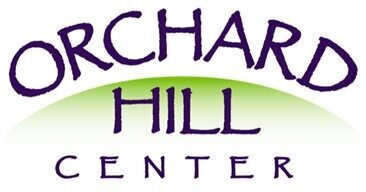By Deborah Metzger, Founder and Director of Princeton Center for Yoga & Health of Skillman, NJ
According to the American Chiropractic Association, back pain is one of the most common reasons for missed work – in fact, back pain is the second most common reason for visits to the doctor’s office, outnumbered only by upper-respiratory infections. Experts estimate that as many as 80% of the population will experience a back problem at one point or another in their lives and that Americans spend at least $50 billion each year on back pain – and that’s just for the most easily identified costs.
Yoga can be a great way to address back pain. It is a system which balances strength and flexibility and addresses the whole body. Most people are tight in key areas affecting the spine, for example in the hips and shoulders, hamstrings and psoas. The spine may be compressed and back muscles tight or weak. For these considerations, yoga can be ideal for back pain sufferers.
 Many of the postures in yoga gently strengthen the muscles in the back, as well as the abdominal muscles. When these muscles are well conditioned, back pain can be greatly reduced or avoided.
Many of the postures in yoga gently strengthen the muscles in the back, as well as the abdominal muscles. When these muscles are well conditioned, back pain can be greatly reduced or avoided.
I do, however, hesitate to promote yoga as a way to relieve back pain. Yoga practice addresses the whole body and I feel strongly that benefits such as relief of back pain, stress reduction, improved sleep and digestion are merely its “side effects”. Yet they are great motivators for us to begin and continue our practice.
A study in the Dec. 20, 2005 issue of the Annals of Internal Medicine suggests that yoga may be more likely to improve back function, ease chronic back pain, and reduce the need for pain medication than conventional exercise or reading a self-care book.
The researchers say that “Yoga may be beneficial for back pain because it involves physical movement, but it may also exert benefits through its effects on mental focus,” they write. This focus could help patients “increase their awareness of how they had been moving and positioning their body in maladaptive ways, to relax tense muscles, and to relieve mental stress.”
Yoga asks you to listen to your body. We often ignore what we know to be true for our bodies – need for sleep, ways of eating, pushing beyond our limits. No wonder we are stressed and often don’t realize it until the body signals us with symptoms of pain or illness. The key is to listen to your body and respect the limits your body tells you by your pain.
Yoga is a whole-body system. It develops body awareness and places emphasis on alignment (In my classes, I place particular emphasis on awareness of neutral spine and no heightened sensation in the joints). Yoga incorporates breathing techniques and emphasis on the breath which can lead to stress relief and slowing down movements in the poses which can help avoid injury, deepen a safe and healthy stretch. Slow, mindful movements into and out of the poses will help you learn what movements feel safe, which might cause pain, which are contraindicated for you, where to “back off”.
Back pain could be the result of serious problem, so please consult your physician to see if yoga is appropriate for you. For example, it is important to find out if there is serious damage to any of the discs in your spine or if you have osteoporosis. If there is damage to the discs you might have numbness or tingling sensations in your legs and feet or sharp, immobilizing pains in your back, but not always. There may be no symptoms with osteoporosis. The wrong practice can actually worsen your condition. Ask your doctor for any specific movement contraindications, safety modifications needed, any interactions between your medication and exercise. It’s important to find a qualified teacher who is trained to work with special needs.
The Cat-Cow Stretch is an active yoga pose that I would recommend to help establish ideal spinal alignment, strengthen and stretch back muscles and develop coordinated spinal movement. Here’s how you do it:
Getting on all fours, position your hands under your shoulders and your knees under your hips, your back is flat (we call this “table top”). As you inhale, lift your tailbone, arch your back, lengthen the neck, and raise your chin. As you exhale, tuck your tailbone, round your back and roll your chin to your chest. Repeat the sequence at the pace of your breath. You should be moving the entire time you are breathing – it is not a race to get into the Cat Stretch or Cow Stretch, but rather the mindful movement, coordinated with the breath that gets you there that is going to help your back. (Please remember not to do movements which cause pain!)
Princeton Center for Yoga & Health offers a wide variety of yoga classes for everyone, there are several classes that cater to people with a variety of health concerns.
